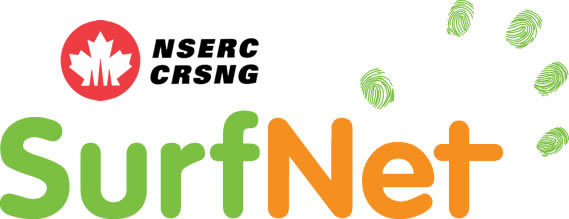Collaboration for Simulation-Based Training
Description
Digital tabletop surfaces promise significant advantages over traditional desktop computers, permitting the development of powerful systems with natural touch-based interaction, and allowing small co-located groups to collaborate through the shared display area. Despite this promise, surprisingly few practical surface-based applications have been developed. In this project, we are collaborating with the Army Simulation Centre, located in Kingston, Ontario, to create and test a collaborative simulation environment. This application will serve as a test bed for experimentation in the design and efficacy of tabletop surface implementation of simulation environments. The Army Simulation Centre is interested in evaluating technologies that will decrease the training time required for users of the simulation tool, and for promoting collaboration during the simulation. Our second partner, Gallium Visual Systems, is interested in demonstrating the utility of their mapping software in next-generation simulation tools.
The Canadian military makes extensive use of simulations to train officers in making strategic decisions and controlling groups of people. These simulations involve “trainees” who act out realistic Command and Control (C2) scenarios, and “interactors” who run the simulation behind the scenes. For example, an officer trainee might be located in a mocked-up command bunker, communicating by radio with “officers in the field,” played by interactors who relay observations and actions. The interactors are, in fact, located at desks with PC computers using a simulation tool that mimics battlefield troop movement and combat engagement. These interactors use traditional PC-based simulation software, which allows them to move units and perform combat actions on a map. However, interactors require considerable training in order to effectively use the simulation tools, and because each interactor sits in front of his/her own PC, collaboration is awkward.
To address these problems, we designed a collaborative tabletop prototype called OrMiS, for Orchestrating Military Simulations. OrMiS is an interface for interactors based on a multi-touch tabletop surface. This system aims to provide interactors with an efficient and easily-learned way to perform simulations while supporting collaborative manipulation of military units. OrMiS offers a lot of dedicated functionalities. For example, with OrMiS propose an error-tolerant and synchronous way to plan the troop’s routes. In addition, during route planning, a great deal of information is conveyed visually; the line of sight of each unit is displayed while drawing the route, helping interactors to easily determine a path which minimizes troops’ visibility, lowering risk of ambush. OrMiS also supports the access of a detailed view of the map while maintaining a shared overview of the battlefield, through bifocal lenses. These allow selective zooming of part of the map, while allowing the rest of the map to remain visible. Several lenses can be created, thus allowing each user to work individually on different areas. As with standard map applications (e.g. Google Maps), the resolution of the map displayed through a lens automatically increases with the zoom level, showing details that are not visible on the overview.
OrMiS provides an excellent opportunity to study the use of digital tabletops in concrete application domains such as military simulations, and constitutes a scaffold to a better understanding of co-located collaborative aspects around digital surfaces.







